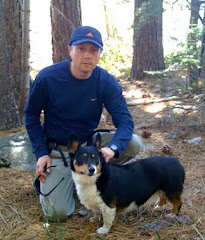I'm delighted to welcome Patricia Bracewell, a fellow Bay Area writer whose historical novel, SHADOW ON THE CROWN is available in stores today.The first in a trilogy set in the brutal days of the 11th century, Shadow on the Crown tells the rare, often forgotten story of Emma of Normandy, whose marriage to the English king set in motion a series of dramatic events that would ultimately result in the Norman Conquest. The book has received much advance acclaim, with Publishers Weekly calling it "an enthralling debut . . . highly entertaining." I'm currently reading and loving it, and will soon post a review here; in the meanwhile, please join me in welcoming my friend and colleague, Patricia Bracewell.
y.
What inspires about historical
fiction? What can you tell us about your particular inspiration to write THE
SHADOW ON THE CROWN? I have
always loved books that take me to a time and place different from my own,
whether they are fantasy or historical fiction or even sci fi, and so as a
writer I turned to the genres that I love. I thought about writing fantasy for
a long time – back when I was in my ‘dreaming of writing’ phase. But the idea
of creating an entire world from scratch, as LeGuin and Tolkien did for
example, was daunting. When I discovered Emma of Normandy, a queen of England
Tell us about the time period in
which your book is set. What drew you to the particular era? What are some of
the challenges and/or delights about writing about this time? I set the book in England kingdom
of Aethelred II
 What process did you use to
transport yourself (and readers) to another time period? How do you go about
your research and incorporating it into fiction? The late Anglo-Saxon
period was a time when courage and honor were highly prized, and this is
reflected in Old English poetry. Re-reading some of that poetry, like The Wanderer, The
What process did you use to
transport yourself (and readers) to another time period? How do you go about
your research and incorporating it into fiction? The late Anglo-Saxon
period was a time when courage and honor were highly prized, and this is
reflected in Old English poetry. Re-reading some of that poetry, like The Wanderer, The
Does your historical fiction convey
a message or theme relevant to our world today? If so, what do you think it is?
If not, how do you think readers can find common ground with the characters in
your story? Although
my intention is to transport the reader to early medieval England
Can you tell us about your next
project? Because Shadow on the Crown is the first book of
a trilogy my next project is the follow-up novel. I’m calling it The Perilous Tide, but titles have a way
of changing between first draft and publication, so who knows if that will
stick. The story picks up roughly fourteen months after the final chapter of Shadow. New allies and new enemies come
into the tale, and the setting broadens to include London ,
Sandwich, Oxford , and Windsor
as well as an ancient part of eastern England
Thank you, Patricia! Best of luck and much success with the novel! To find out more about Patricia and her work, as well as upcoming events, please visit her website. To hear Patricia talk about the book on the radio with the fabulous Liz St John of Sunday Magazine on Alice@97.3, go here.












